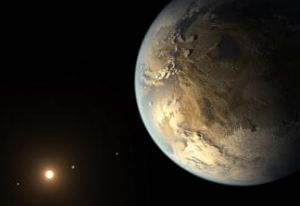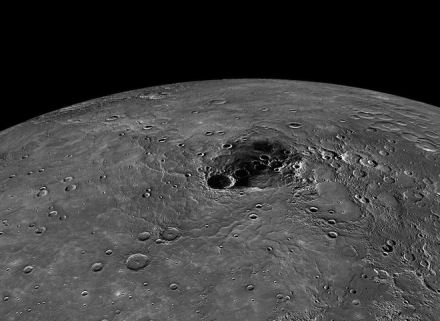
We’ve known for a long time that there is water in the form of ice on Mars. But now, new data from NASA’s rover Curiosity indicates that it’s possible that there is liquid water on the surface of Mars.
Scientists from the University of Copenhagen say the water doesn’t freeze because of calcium perchlorate, which has been found in the Martian soil. This substance lowers the freezing point so the water doesn’t freeze into ice, but exists instead as a very salty liquid (brine). The researchers have detailed their findings in the journal Nature.
The area the scientists have been examining is known as the Gale crater, located just south of the Martian equator. The giant crater is about 100 miles in diameter and its rim is almost 3 miles high. In the middle of the crater lies Mount Sharp, which the rover Curiosity has been slowly travelling towards.
Calcium perchlorate, which can absorb water vapor from the atmosphere, has been discovered in the soil here and the Curiosity rover’s instruments show that the conditions for this absorption to happen exist at night and just after sunrise in the winter.
“Based on measurements of humidity and the temperature at a height of 1.6 meters [5 feet] and at the surface of the planet, we can estimate the amount of water that is absorbed. When night falls, some of the water vapor in the atmosphere condenses on the planet surface as frost, but calcium perchlorate is very absorbent and it forms a brine with the water, so the freezing point is lowered and the frost can turn into a liquid. The soil is porous, so what we are seeing is that the water seeps down through the soil,” explained Morten Bo Madsen, head of the Mars Group at the University of Copenhagen. “Over time, other salts may also dissolve in the soil and now that they are liquid, they can move and precipitate elsewhere under the surface.”
Observations by the rover’s stereo camera have previously shown areas characteristic of old riverbeds with rounded pebbles that indicate there was once flowing water with a depth of up to one meter. Now, the new close-up images taken by the rover en route to Mount Sharp show that there are expanses of sedimentary deposits, lying as “plates” one above the other.
“These kinds of deposits are formed when large amounts of water flow down the slopes of the crater and these streams of water meet the stagnant water in the form of a lake. When the stream meets the surface, the solid material carried by the stream falls down and is deposited in the lake just at the lakeshore. Gradually, a slightly inclined slope is built up just below the surface of the water and traces of such slanting deposits were found during the entire trip to Mount Sharp. Very fine-grained sediments, which slowly fell down through the water, were deposited right at the very bottom of the crater lake. The sediment plates on the bottom are level, so everything indicates that the entire Gale Crater may have been a large lake,” explains Madsen.
But even though liquid water has now been shown to exist, it’s not likely that life will be found on Mars – it is too dry, too cold and the cosmic radiation is so powerful that it penetrates at least one meter into the surface and kills all life – at least life as we know it on Earth.
Related:
Discuss this article in our forum
Curiosity rover finally demystifies radiation hazards on Mars
One-way Mars missions mooted
Mars’ missing water


















Comments are closed.